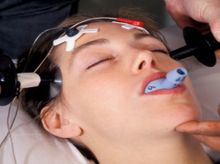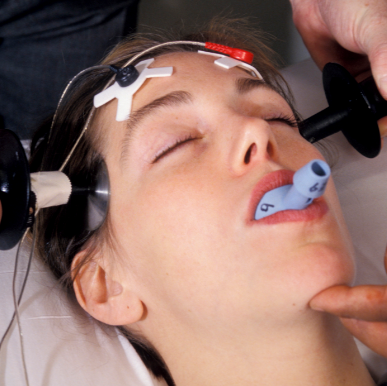Electroconvulsive Therapy (ECT) in South Africa
Search and Compare the Best Clinics and Doctors at the Lowest Prices for Electroconvulsive Therapy (ECT) in South Africa



Electroconvulsive Therapy (ECT) at Natascia Papaikonomou Clinical Psychologist in Johannesburg, South Africa
Our partner clinics in are accredited by the following associations















































































































































No Time?
Tell us what you're looking for and we'll reach out to the top clinics all at once
WHY US?















































































































































No Time?
Tell us what you're looking for and we'll reach out to the top clinics all at once
What does the Procedure Involve?
At the beginning of an ECT, you will receive general anesthesia and a muscle relaxant to help prevent injury and minimize the seizure. Your doctor will place a blood pressure cuff around one of your ankles to stop the muscle relaxant medications from entering foot and entering the muscles there. This is done to enable your doctor to monitor seizure activity by watching for any movement on that foot. You may also be given oxygen through an oxygen mask and a mouth guard to help protect your tongue and teeth from injury. Then, your doctor will place electrode pads on your head. The electrode pads are connected to the ECT machine.
Once you are asleep, your muscles are relaxed, and the necessary equipment is in place, your doctor will press a button on the ECT machine to pass a small amount of electric current through the electrodes to your brain, which produces a seizure that lasts less than 60 seconds. Due to the anesthetic and muscle relaxant, you will not be aware of the seizure. The visible effects of the seizure will usually be limited to the movement of your foot if a blood pressure cuff is placed around your ankle.
Your doctor may use a test called an electroencephalogram (EEG) to record the electrical activity in your brain. The beginning of a seizure is signaled by sudden, increased activity on the EEG and a leveling off shows that the seizure is over.
How Long Should I Stay in South Africa?
ECT can be performed on an outpatient basis, meaning you can leave the hospital on the same day. However, the length of your stay in South Africa while undergoing a Electroconvulsive Therapy (ECT) is largely determined by your personal health state and the number of treatment sessions proposed by your healthcare provider. Treatment typically involves two to three sessions per week, accumulating to six to twelve sessions in total.
Commonly, you would be required to reside in the South Africa throughout the course of the treatment. The total duration not only factors in the treatment sessions but also the requisite rest time post-treatment, typically a couple of hours for the anesthesia effects to dissipate after each session. Moreover, you might need to consider post-treatment consultations for tracking progress and if required, revisions to the treatment plan. Because of these factors, you might want to plan on staying in the South Africa for several weeks. Yet, it's highly advised to confer about the specific timeframe and aftercare process with your healthcare professional to ensure a comprehensive understanding and effective treatment path.
What's the Recovery Time?
Most people can return to their normal daily activities just a few hours after ECT. However, some people may be asked to avoid making important decisions, going back to work, or driving for one to two weeks following the last ECT treatment in a series. The recovery time until you can resume your activities generally depends on when confusion and memory loss after the procedure are resolved, so make sure to talk to your doctor about your specific recovery timeline.
What About Aftercare?
Here are a few aftercare instructions you need to consider:
-
Your doctor may give you antidepressants to help decrease or prevent symptoms of depression. They may also give you medicine to help with headaches that you may experience after each treatment. Always make sure to take the medicine as directed.
-
There is a high chance that you will fall after ECT treatments. Ask someone to help you stand up or walk and keep an eye on you during your recovery period.
What's the Success Rate?
Research has shown that ECT is a highly effective therapy for several mental health conditions. Around 80% of patients with uncomplicated but severe depression experience substantial improvement after their treatments.
ECT is a highly misunderstood procedure because, in the past, the side effects can be severe. However, while ECT does have some side effects and risks, it is much safer today. The risks and side effects include confusion, memory loss, adverse reaction to anesthesia, increased blood pressure and heart rate, headache, nausea, and muscle ache.
Are there Alternatives to Electroconvulsive Therapy (ECT)?
Below are some of the alternatives to ECT:
-
Transcranial Magnetic Stimulation (TMS) involves using rapidly alternating magnetic fields to stimulate specific areas in the brain. It is often used to treat depression.
-
Vagus Nerve Stimulation (VNS) was initially developed to treat seizure disorders, but it can also be used to treat depression. In this procedure, an electric pulse generator is implanted under your skin to stimulate the vagus nerve in the neck.
This information has been accurately sourced and verified by a medical professional for its accuracy, however, we strongly recommend you to consult with your doctor before pursuing medical procedures overseas.








